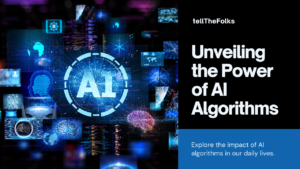
Introduction to Machine Learning Tools
Machine learning has become an integral part of the technological landscape. From autonomous vehicle guidance systems to personalized product recommendations, machine learning is enabling not just smarter products, but also, the transformation of entire industries.
But when it comes to hands-on implementation, the right tools can make all the difference. For developers and data scientists, finding the perfect balance of functionality, ease of use, and community support is key. Here’s a deep-dive into the top five machine learning tools that are currently leading the pack.
1. TensorFlow
Developed by the Google Brain team, TensorFlow is an end-to-end open-source platform for ML. At its core, TensorFlow is designed to offer a comprehensive toolkit for building and deploying ML models. The platform has gained popularity for its versatile and extendible framework, suitable for a wide range of applications, from research to experimental models in the industry.
TensorFlow‘s high-computational efficiency, thanks to its innovative back-end structure, has made it the go-to framework for some of the largest machine learning models, including language and image models. Additionally, TensorFlow’s feature-rich ecosystem includes tools for cloud deployment, model management, visualization, and training. Not to mention, it’s backed by a massive community, which ensures continuous updates, bug fixes, and a growing stack of reference materials.
TensorFlow Benefits
- Scalability:
Easily transition from prototyping on your laptop to running on GPUs in the cloud. - Flexibility:
Complexity is manageable, allowing ML models to evolve with changing needs. - Community and Support:
An extensive community and comprehensive documentation make troubleshooting and learning a breeze. - Production-Ready:
Tools like TensorFlow Serving and TensorFlow Lite make model deployment seamless. - Advanced Research Support:
Home to state-of-the-art models and cutting-edge research in ML fields.
2. PyTorch
PyTorch is another heavyweight in the machine learning landscape. Developed by Facebook’s AI Research lab (FAIR), PyTorch is known for its user-friendly approach and strong support for dynamic computation graphs, making it a favorite among researchers and hobbyists.
One of PyTorch’s standout features is its tight integration with Python, allowing for an intuitive and flexible work environment. Also, its deep learning library offers maximum flexibility and speed, providing tools to build scalable ML models that can be trained on CPUs or GPUs. PyTorch’s ‘torchscript’ with strong GPU acceleration increases its suitability for production deployment. The PyTorch community, though not as extensive as TensorFlow’s, is rapidly growing, contributing to the richness of resources and models.
Each tool possesses unique strengths tailored to specific needs. Whether a novice in machine learning or an experienced data scientist, these tools can enhance your projects significantly.
PyTorch Benefits
- Pythonic Programming: The library is designed to feel native to Python, reducing the learning curve for Python developers.
- Strong GPU Support: PyTorch boasts efficient GPU support for both model training and inference.
- Dynamic Computational Graphs: Easier for debugging and more intuitive for developing complex models.
- Rapid Ecosystem Growth: A rising number of libraries and resources make it a versatile platform for various ML tasks.
- High-Level Libraries: Modules like torchvision and torchaudio provide easy-to-use computer vision and audio-processing routines.
3. Scikit-Learn
Scikit-learn shines as a powerful ally in the realm of data mining and analysis. By harnessing the strengths of NumPy, SciPy, and matplotlib, this open-source machine learning gem seamlessly collaborates with Python’s scientific libraries, all the while prioritizing ease of use. Its focus on user-friendly model creation through intuitive interfaces for various algorithms makes it a must-have tool for budding data scientists and machine learning enthusiasts. Noteworthy for its knack in sculpting compact to mid-sized models, often with limited data, Scikit-learn is a true standout in the field.
Scikit-Learn Benefits
- Simple and Consistent API:
Easy to learn and use, making it a great tool for beginners. - Model Selection and Model Assessment Tools:
Allows for streamlined and reproducible model building and evaluation. - Large Community and Ecosystem:
Extensive support and numerous third-party libraries using scikit-learn. - Highly Optimized:
Numerical backend and functions are well-optimized and run quickly. - Effective Tutorials and Documentation:
Ideal starting point for those new to machine learning.
By comprehending these distinct features and advantages, you can align your choice with your project's, team's, and organization's requirements. With technology evolving rapidly, new tools will continue to emerge, creating an exciting era for those in the machine learning field.
You may also like : Artificial Intelligence vs. Machine Learning
4. Keras
Keras is an open-source neural-network library that is designed to be user-friendly, modular, and extensible. It is capable of running on top of TensorFlow, Theano, and Microsoft Cognitive Toolkit (CNTK) and is known for its user-friendly APIs that makes building and training models quick and easy.
Originally developed by François Chollet, a Google engineer, Keras’ simplicity and modularity make it a perfect tool for those starting with machine learning or requiring a streamlined interface for creating and testing new models. Keras has a focus on user experience and developer productivity and allows for fast experimentation with different models and data sets.
Keras Benefits
- Focus on User Experience: The tool is designed to make it accessible for newcomers and efficient for experts.
- Modularity and Flexibility: Models can be built by connecting configurable building blocks together.
- Easy Prototyping: Facilitates the quick development of deep learning models.
- Integrates Well With Other Frameworks: Can run on top of TensorFlow, CNTK, or Theano.
- Wrapper for Several High Performance Libraries: Users can choose the backend according to their needs.
5. Apache Spark MLlib
Apache Spark MLlib is Apache Spark’s scalable ML library, used to perform various machine learning tasks on big data systems. MLlib is designed to be easy to use and makes it possible to scale out your machine learning workloads across large clusters with little effort.
With MLlib, developers and data scientists can leverage Spark’s powerful distributed computing model to solve complex machine learning problems on massive amounts of data. MLlib is particularly well-suited for ML workflows requiring data preprocessing, feature engineering, and model deployment in a single environment.
Apache Spark MLlib Benefits
- Scalability: Can handle large-scale data and models, ideal for enterprises and big data applications.
- Rich Set of Preprocessing Tools: Makes it a one-stop solution for feature extraction and transformation.
- Integration with Existing Big Data Ecosystems: Seamlessly fits into your current big data pipeline.
- Agile ML Pipelines: Provides high-level APIs that make it easy to combine algorithms into an ML pipeline.
- Stream Processing: Ability to perform real-time stream processing using Spark’s Structured Streaming API.
Conclusion
The top five ML libraries: TensorFlow, PyTorch, Scikit-learn, Keras, and Apache Spark MLlib, each offering unique functions for diverse needs. Selecting the right tool depends on use case, data complexity, and user familiarity. With active communities for support, these tools empower data scientists to advance in AI and analytics through continuous exploration and experimentation.
Share to
Frequently Asked Questions (FAQ)
Machine learning tools are software applications or platforms that provide algorithms, libraries, and other functionality to design, train, and implement models that can learn from data to make predictions or decisions without being explicitly programmed for specific tasks.
There’s a wide range of machine learning tools available, including data preprocessing tools, algorithm libraries, visualization tools, and complete platforms that support end-to-end data analysis and model deployment. Popular examples include TensorFlow, PyTorch, Scikit-learn, and Keras.
Yes, many machine learning tools are open-sourced and free, such as TensorFlow, PyTorch, and Scikit-learn. These tools provide powerful libraries and APIs to support the development of machine learning models.
Related Posts

7 Best Social Media AI Tools in 2024
Explore innovative solutions in latest social media AI tools designed to transform your online presence, streamline content creation, and optimize engagement.

Artificial Intelligence Algorithms
Artificial Intelligence algorithms are the backbone of modern intelligent systems, enabling machines to perform tasks that typically require human intelligence.

Innovations in AI for Education
Discover how Innovations in AI (Artificial Intelligence) is transforming education with personalized learning paths, intelligent tutoring systems, and predictive analytics for enhanced learning experiences.
